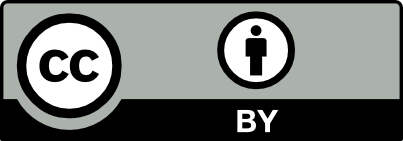DOI 10.15507/2079-6900.25.202303.159-173
Original article
ISSN 2079-6900 (Print)
ISSN 2587-7496 (Online)
MSC2020 35Q92
Numerical Study of Methane Mixtures' Conversion Under the Influence of Laser Radiation
E. E. Peskova1, 2, V. N. Snytnikov1
1oreskov Institute of Catalysis SB RAS (Novosibirsk, Russian Federation)
2National Research Mordovia State University (Saransk, Russian Federation)
Abstract. The article presents a study of methane mixtures' laser conversion under various conditions of the computational experiment. Such flows are characterized by sharp local changes in the gas dynamic characteristics and the mixture components' concentrations. Their dynamics and mutual transformations are described by a stiff system of Navier-Stokes equations and chemical kinetics, which imposes serious restrictions on the choice of a computational algorithm. Numerical experiments were carried out using previously developed 2D code for modeling subsonic axisymmetric flows of a multicomponent medium, supplemented by modules that take into account laser radiation and solve equations of methane conversion's chemical kinetics. Verification of the results was made by calculating the conversion of methane under the influence of walls' external heating. Comparison of the substances' concentrations at the pipe outlet with the direct solution of the chemical kinetics system at different reaction temperatures showed a good agreement of the results. Computational experiments on the laser radiation's effect on the flow of a chemically active absorbing medium have been completed. It is shown that the laser radiation introduced into the mixture and absorbed by ethylene, changes the flow pattern and significantly increases the temperature of the gas mixture. An increase in temperature contributes to an increase in the yield of target products (ethylene, acetylene, hydrogen) at the reactor shorter length, while in the absence of radiation, the maximum concentrations of products appear at the reactor's outlet. The effect of the initial composition of the gas mixture on the methane's conversion is investigated, and it is concluded that the presence of ethylene significantly increases the formation of target products at moderate reactor walls' temperatures in the presence of laser radiation.
Key Words: computer modeling, Navier-Stokes equations, axisymmetric flows, chemical kinetics, methane laser conversion
For citation: E. E. Peskova, V. N. Snytnikov. Numerical Study of Methane Mixtures' Conversion Under the Influence of Laser Radiation. Zhurnal Srednevolzhskogo matematicheskogo obshchestva. 25:3(2023), 159–173. DOI: https://doi.org/10.15507/2079-6900.25.202303.159-173
Submitted: 28.05.2023; Revised: 21.07.2023; Accepted: 25.08.2023
Information about the authors:
Elizaveta E. Peskova, Associate professor, Department of Applied Mathematics, Differential Equations and Theoretical Mechanics, National Research Mordovia State University (68/1 Bolshevistskaya St., Saransk 430005, Russia), Senior Researcher, Boreskov Institute of Catalysis SB RAS (5 Lavrentiev Ave., Novosibirsk 630090, Russia), Ph.D. (Phys.-Math.), ORCID: http://orcid.org/0000-0003-2618-1674, e.e.peskova@math.mrsu.ru
Valeriy N. Snytnikov, Leading Researcher, Boreskov Institute of Catalysis SB RAS (5 Lavrentiev Av., Novosibirsk 630090, Russia), Ph.D. (Phys.-Math.), ORCID: https://orcid.org/0000-0003-2655-1532, snyt@catalysis.ru
All authors have read and approved the final manuscript.
Conflict of interest: The authors declare no conflict of interest.
 This is an open access article distributed under the terms of the Creative Commons Attribution 4.0 International License.
This is an open access article distributed under the terms of the Creative Commons Attribution 4.0 International License. 